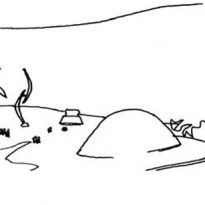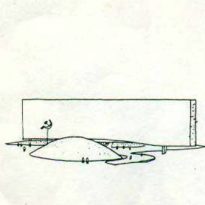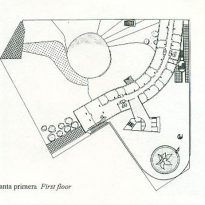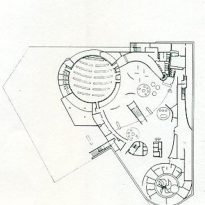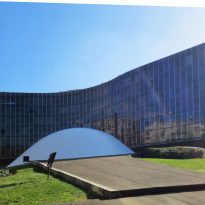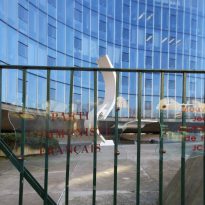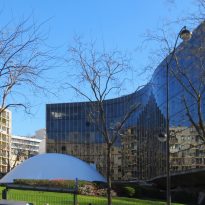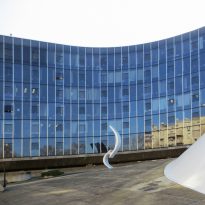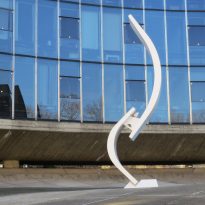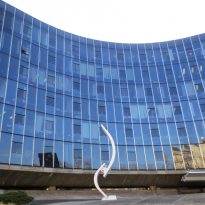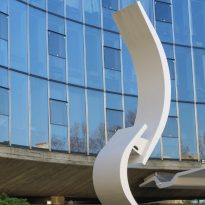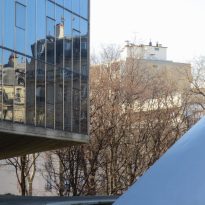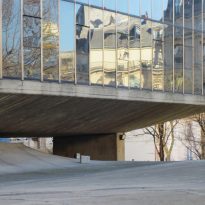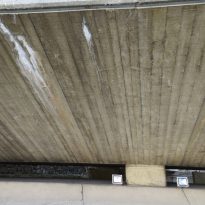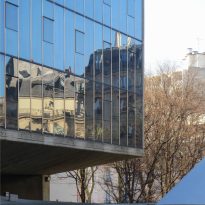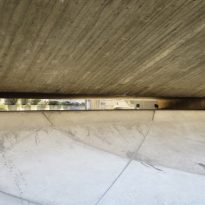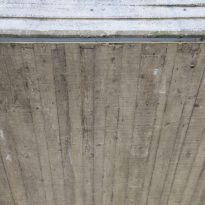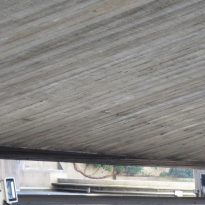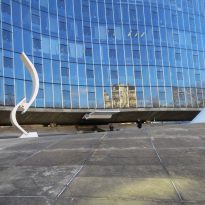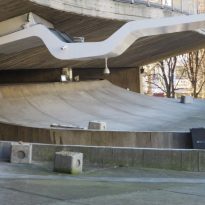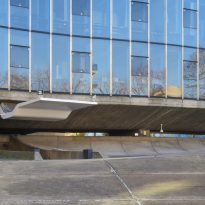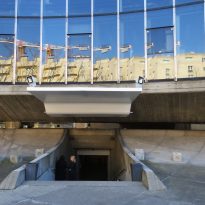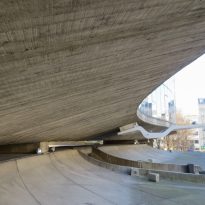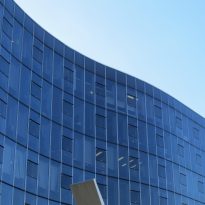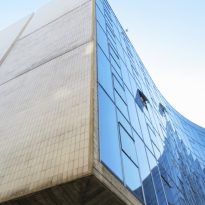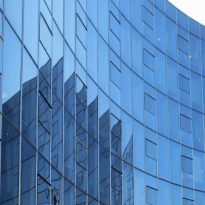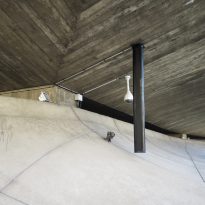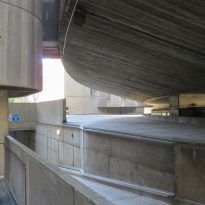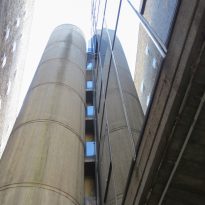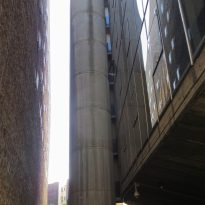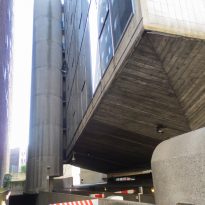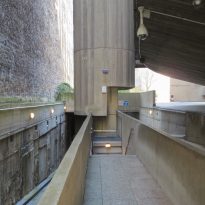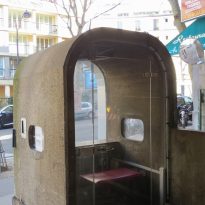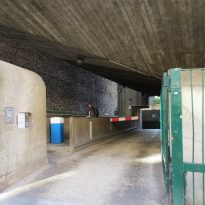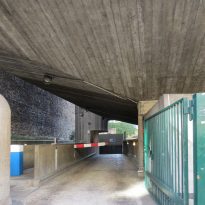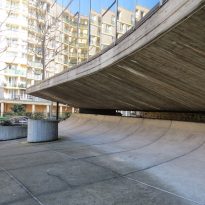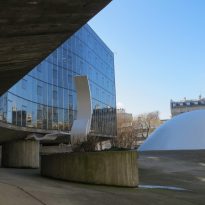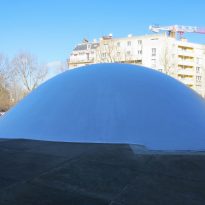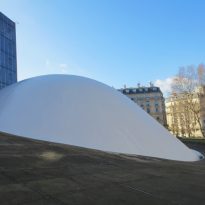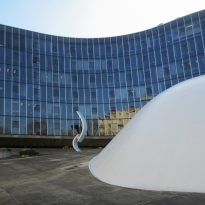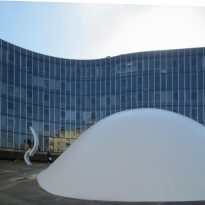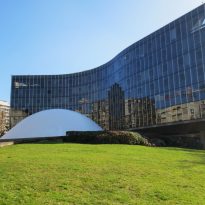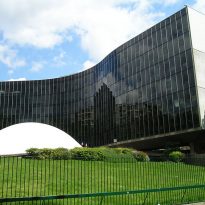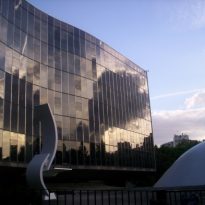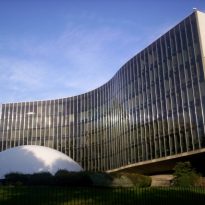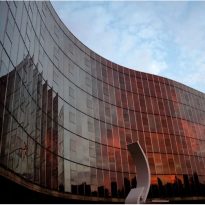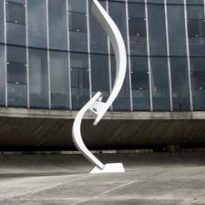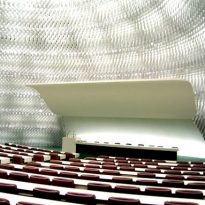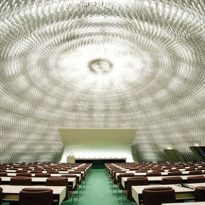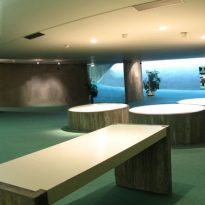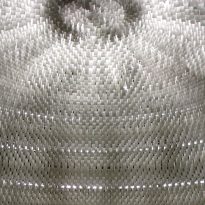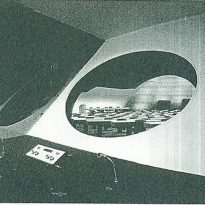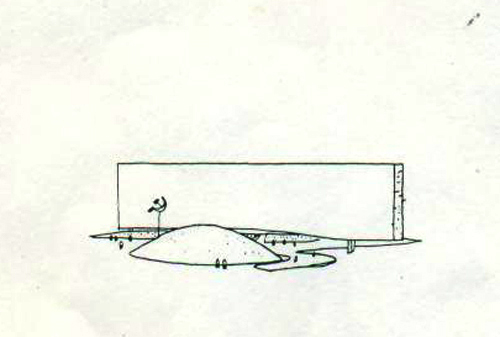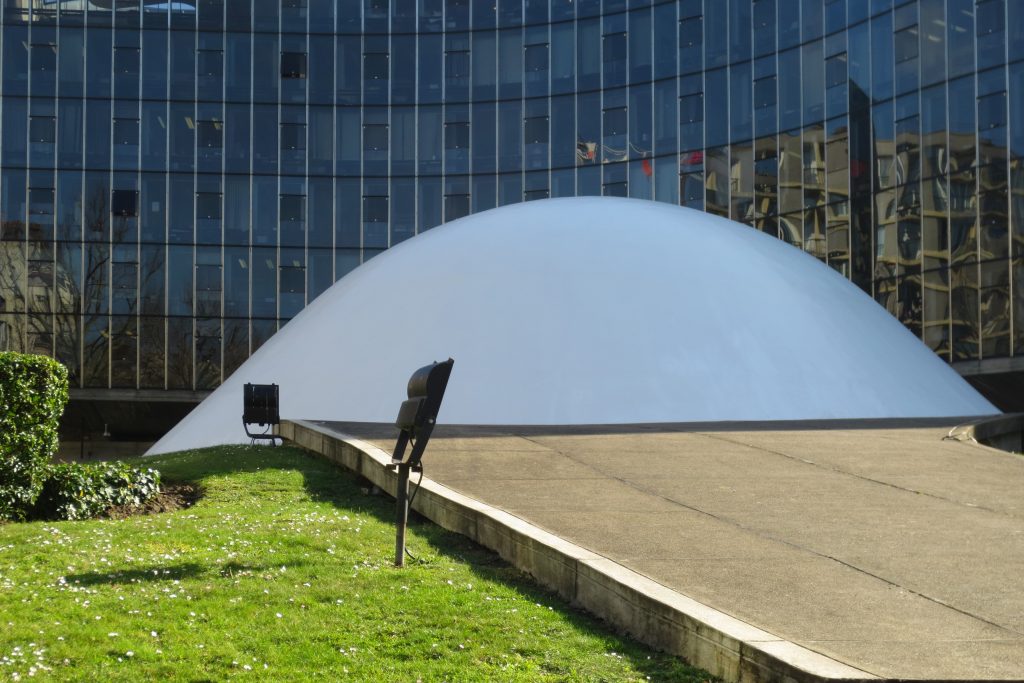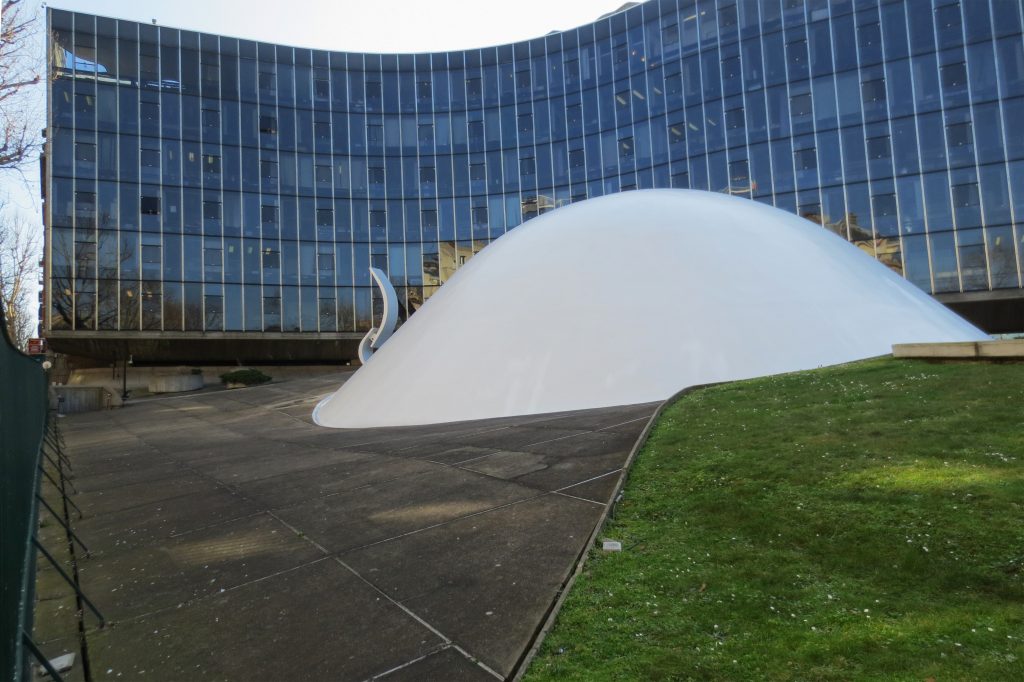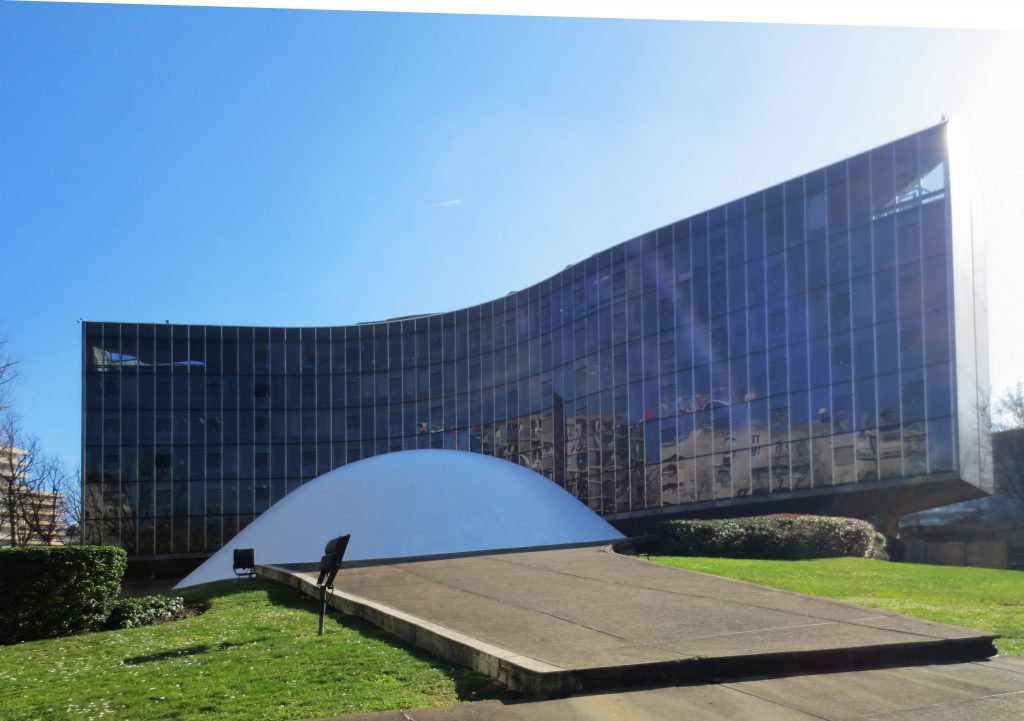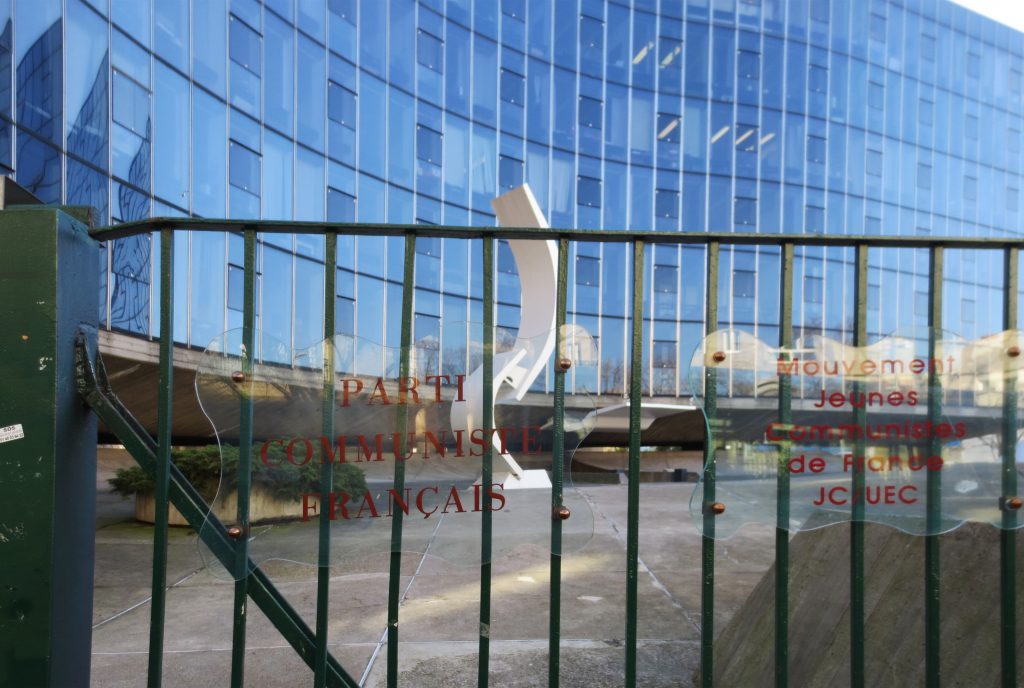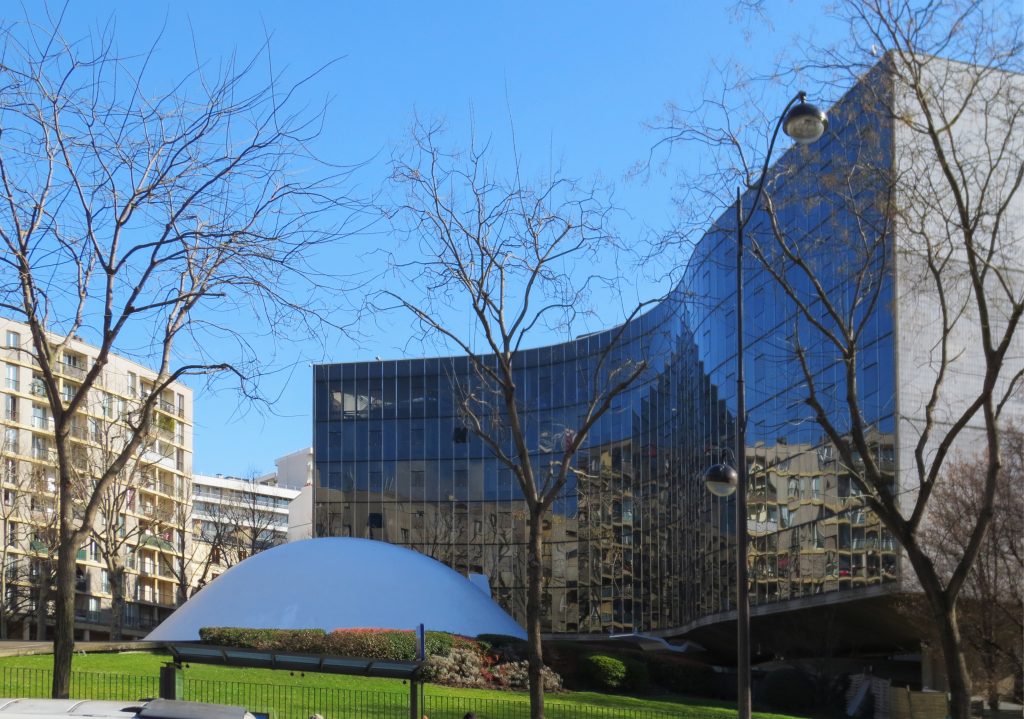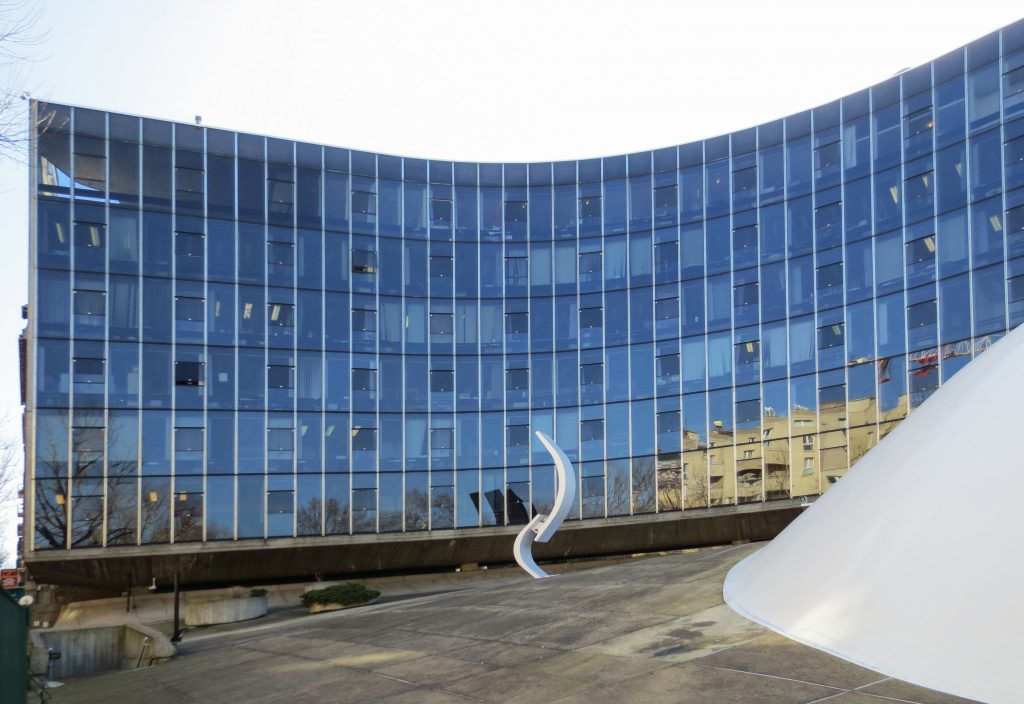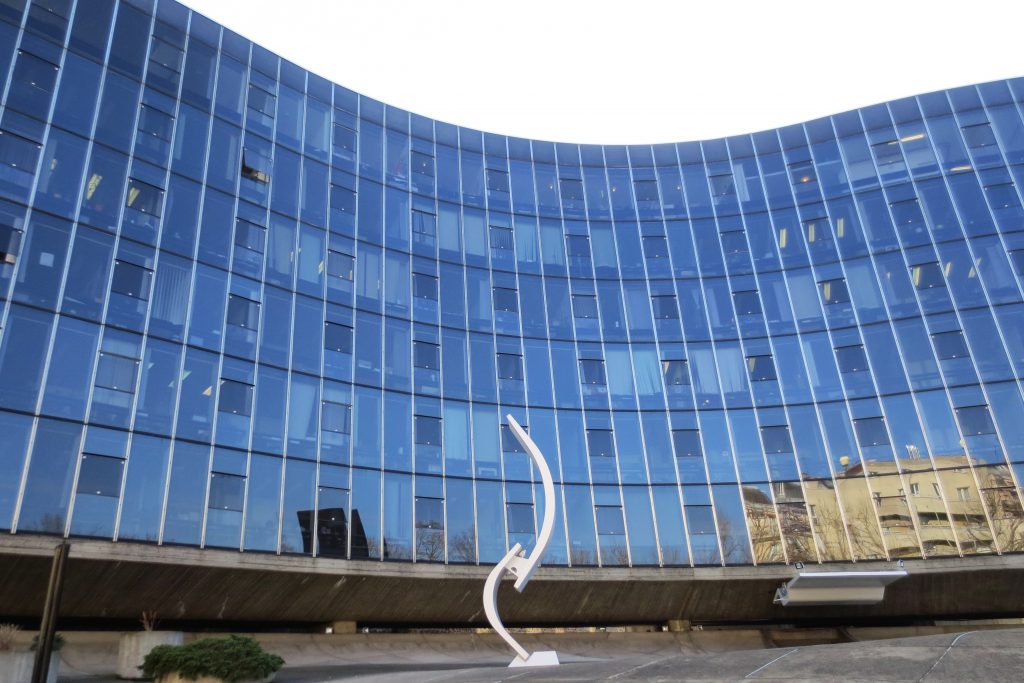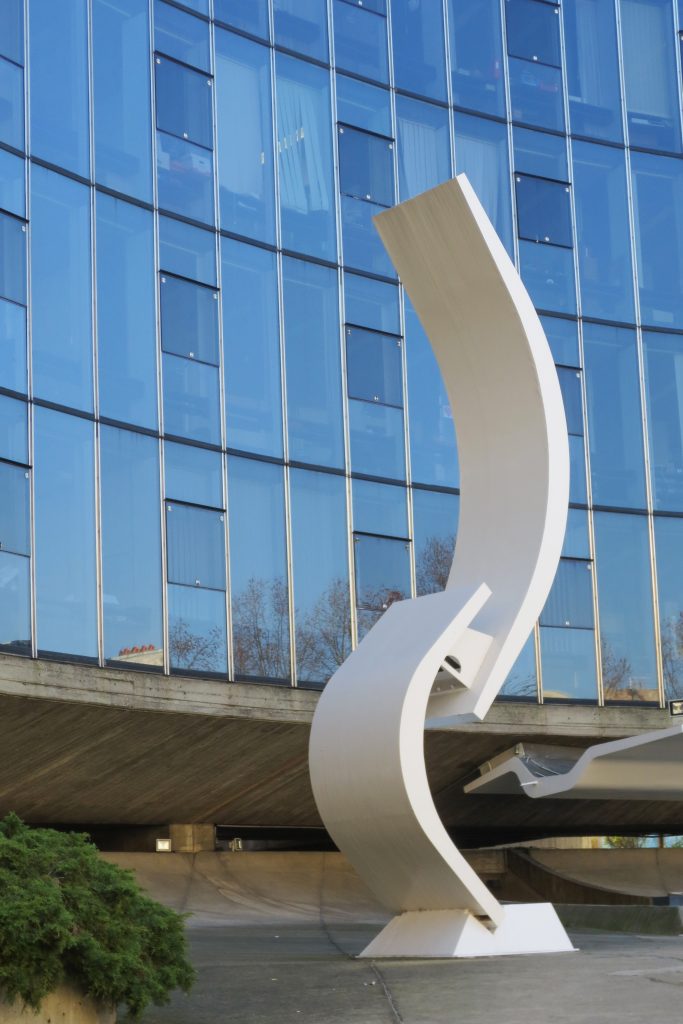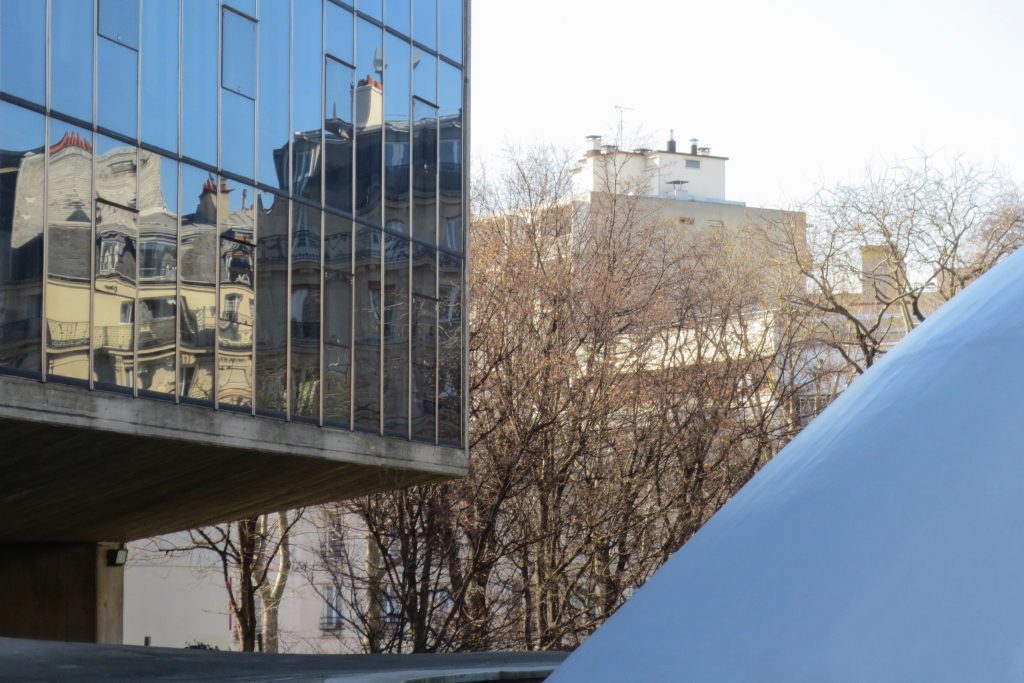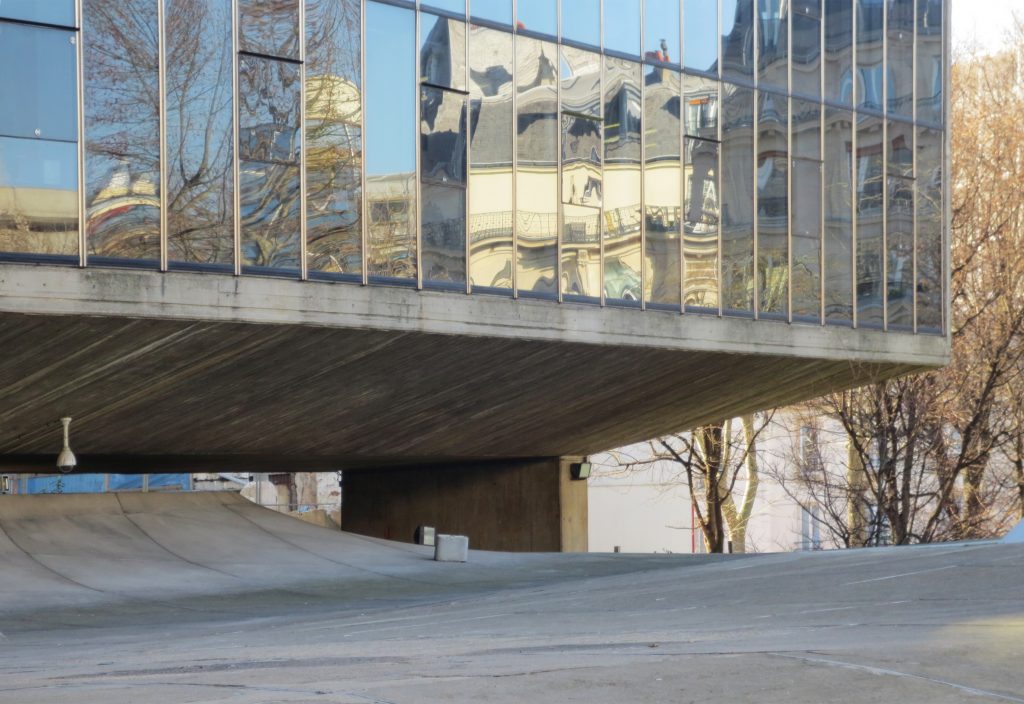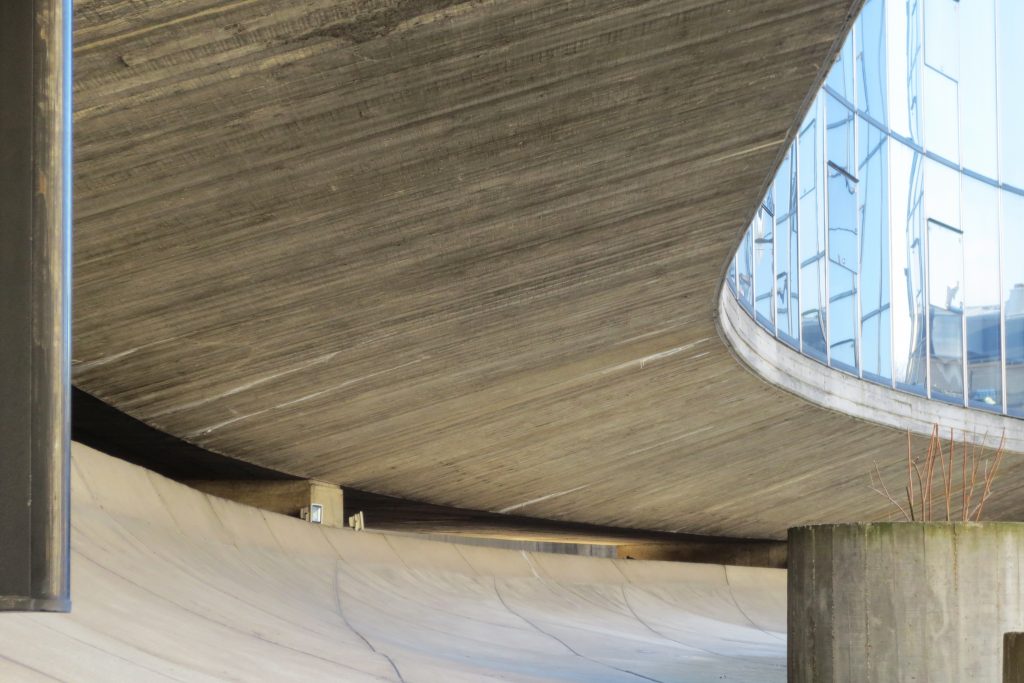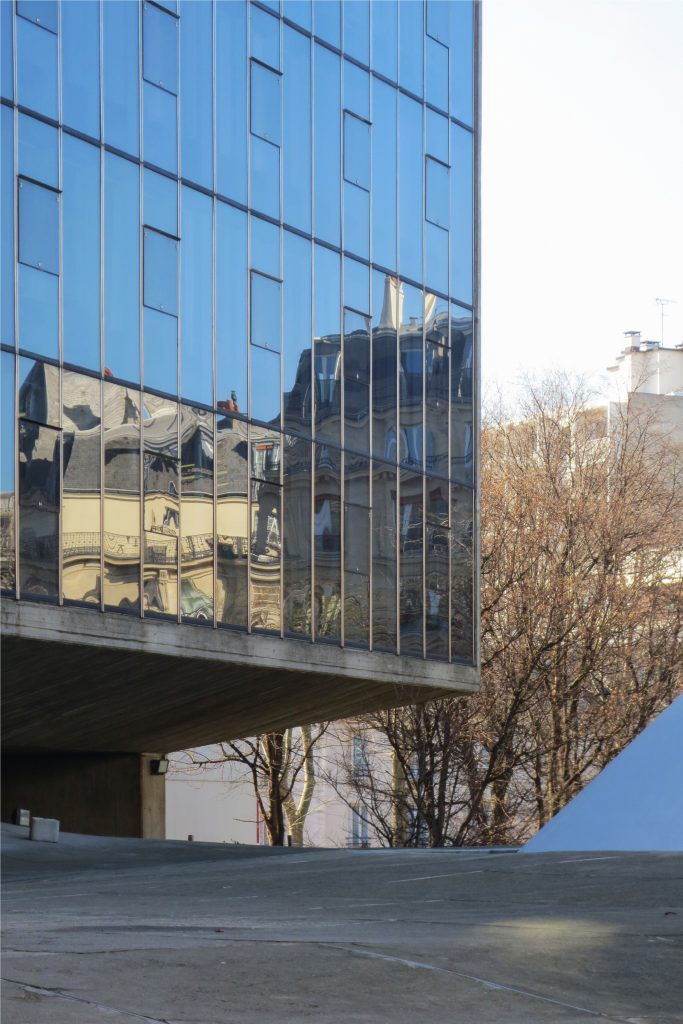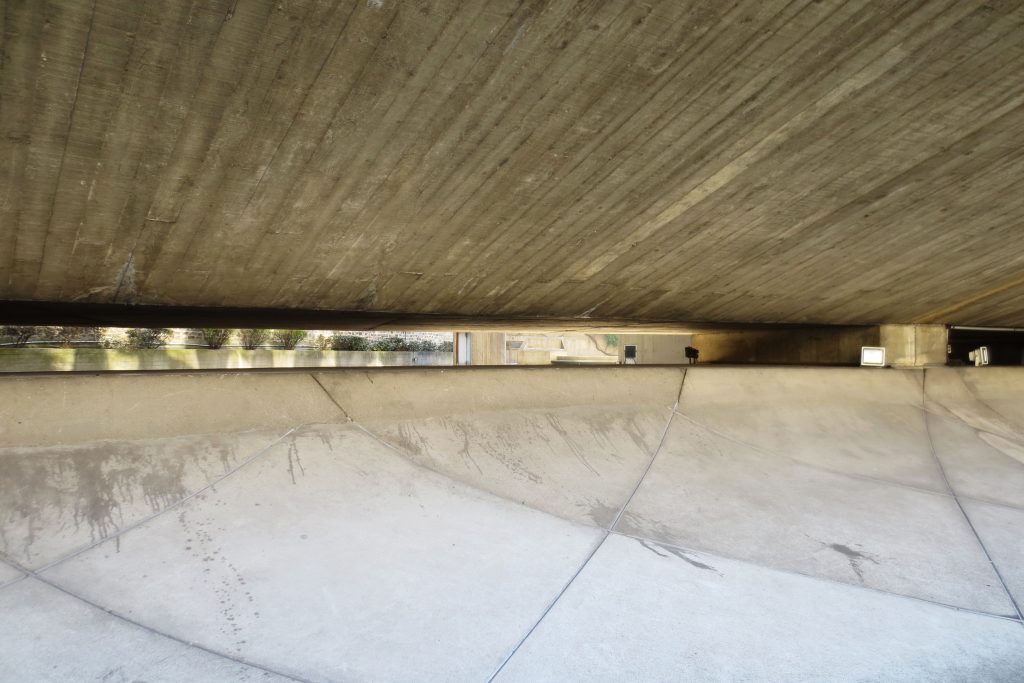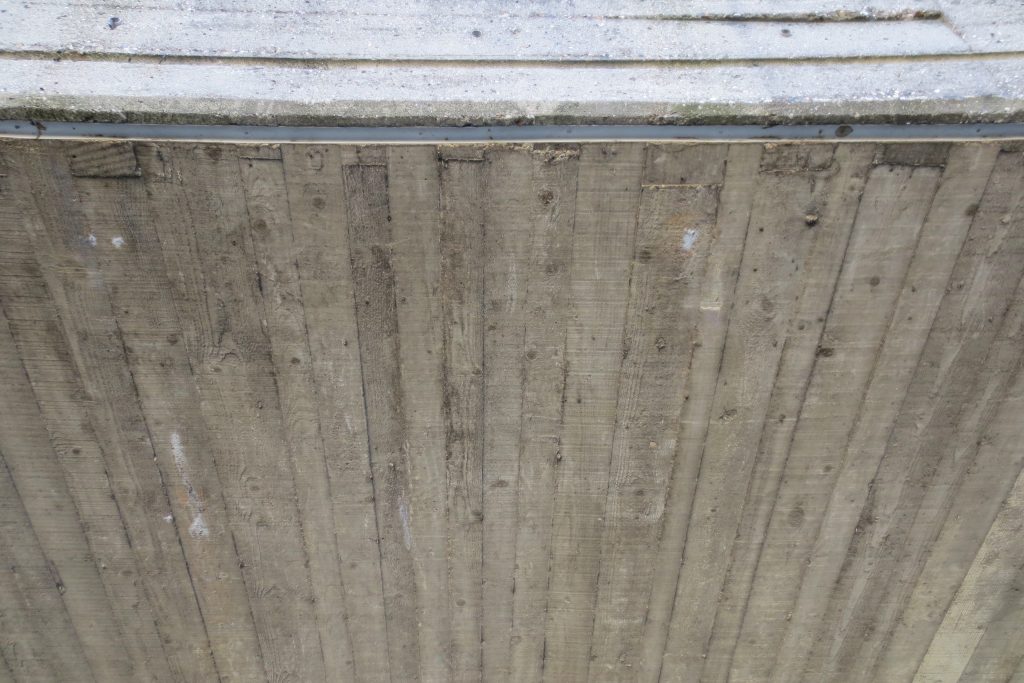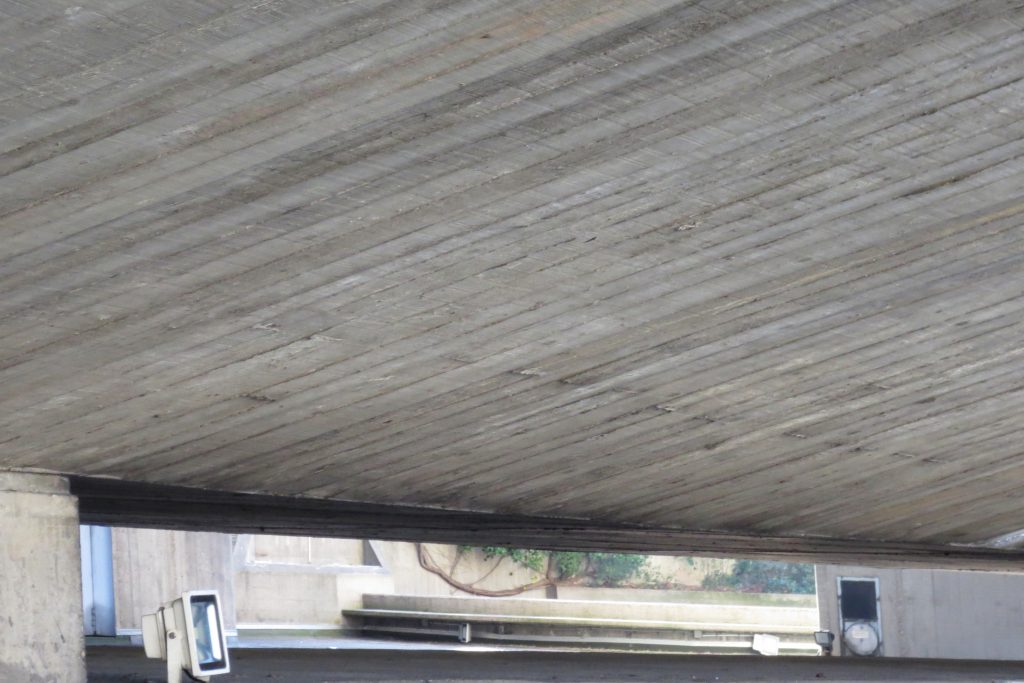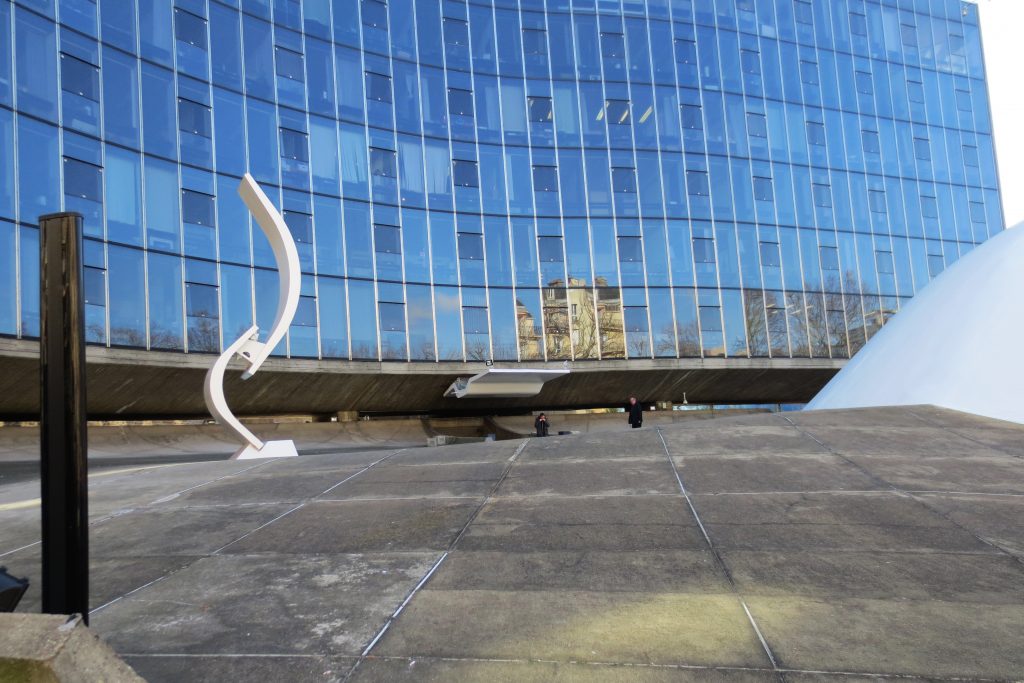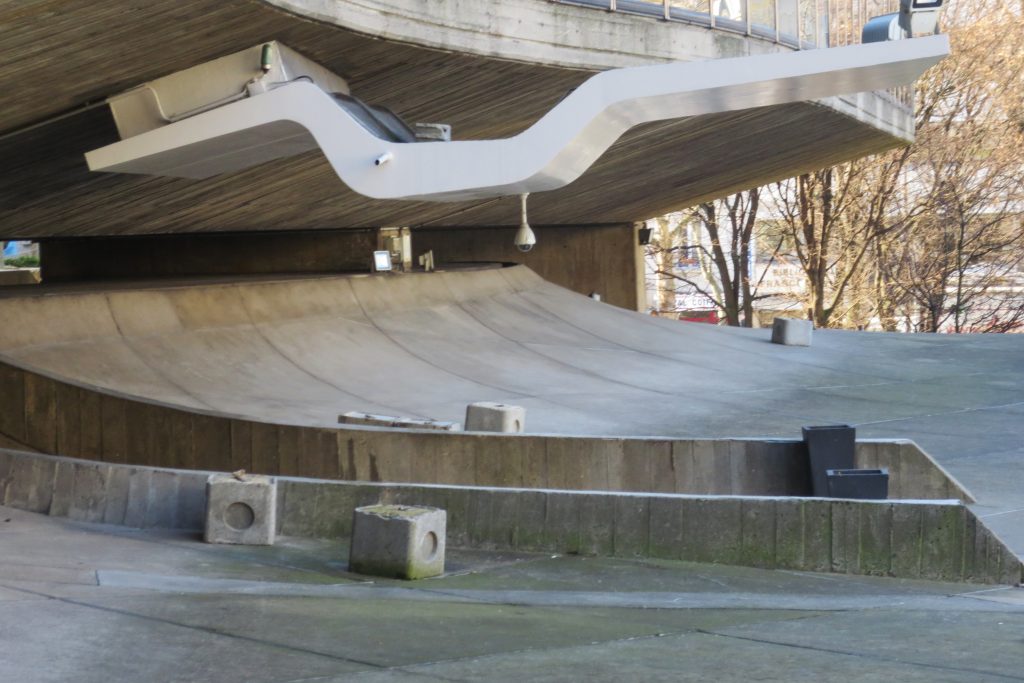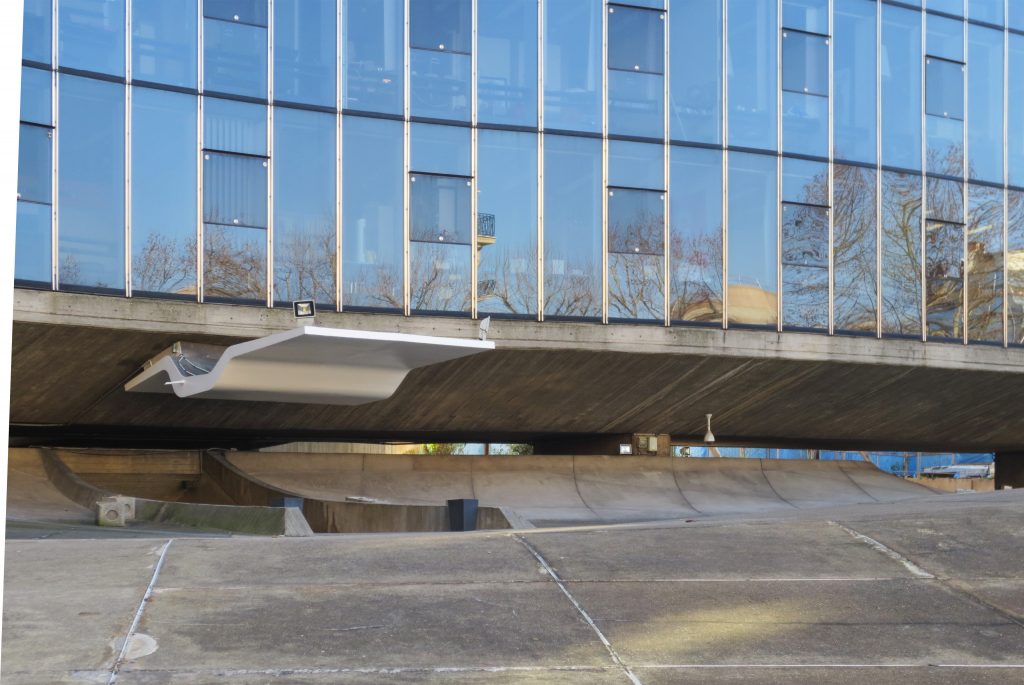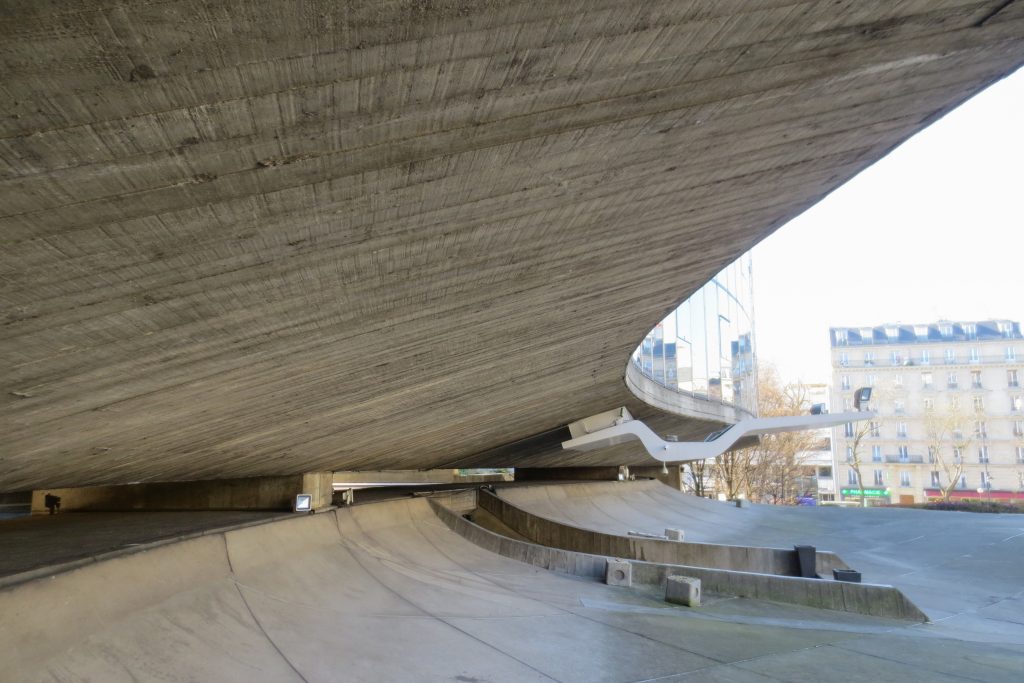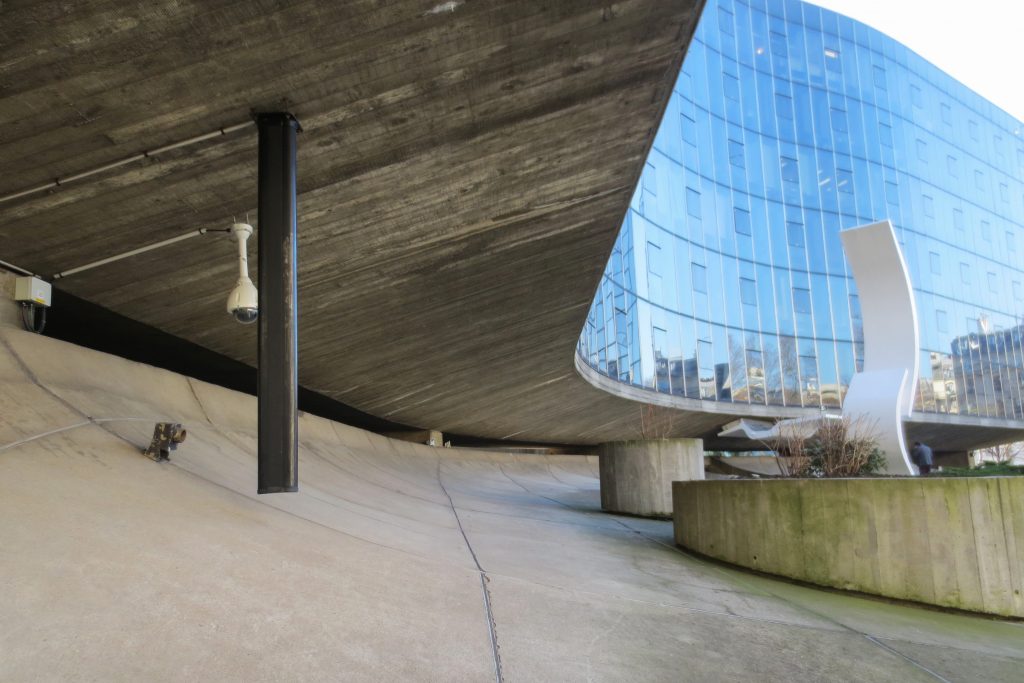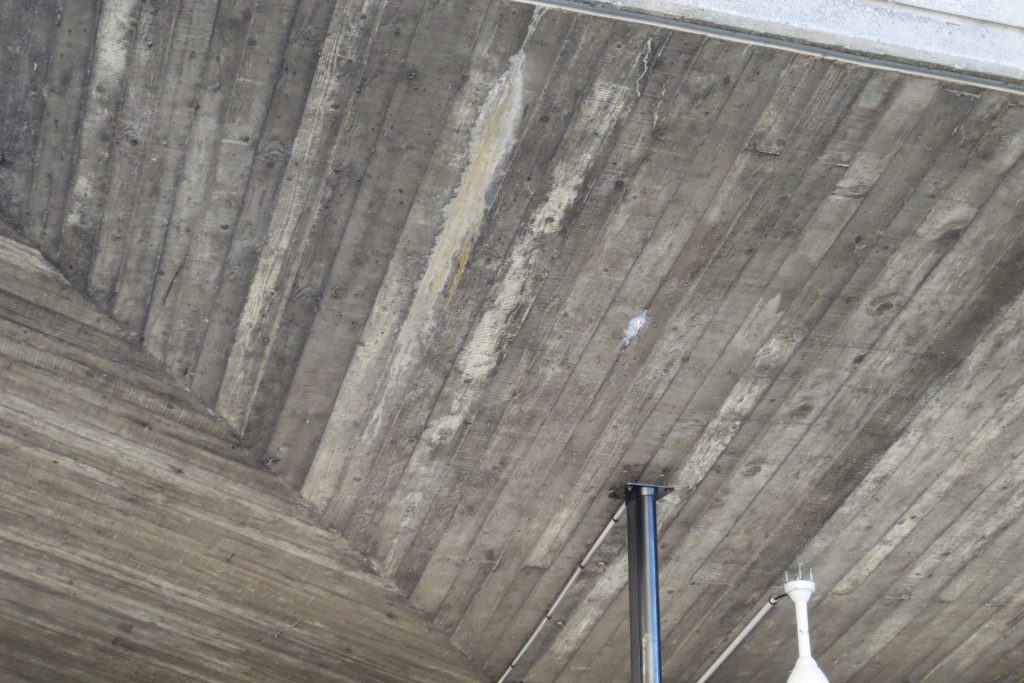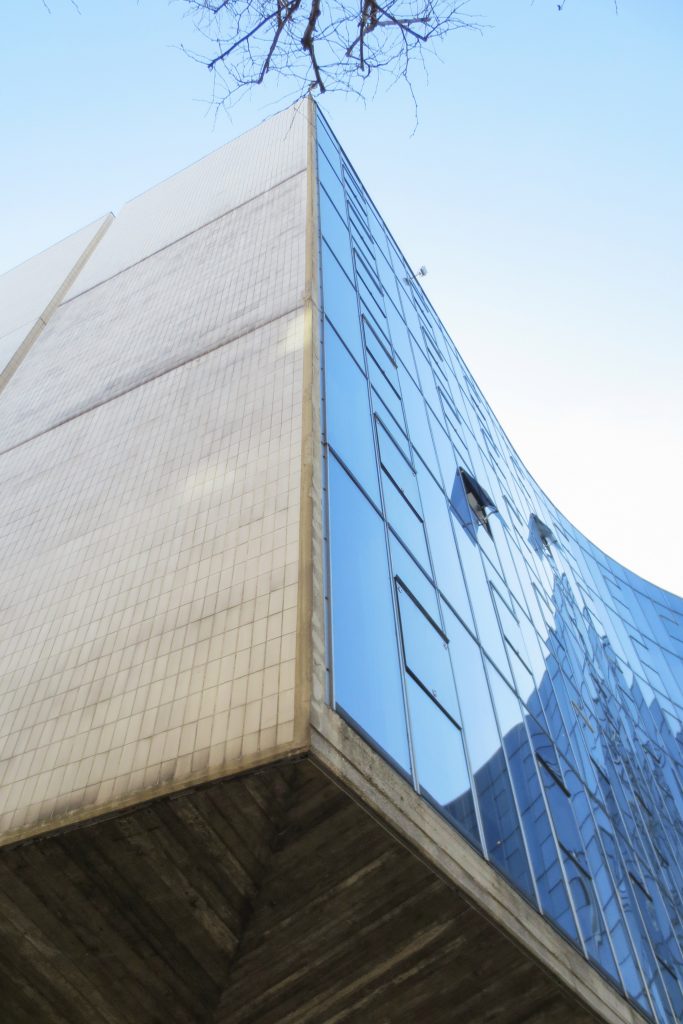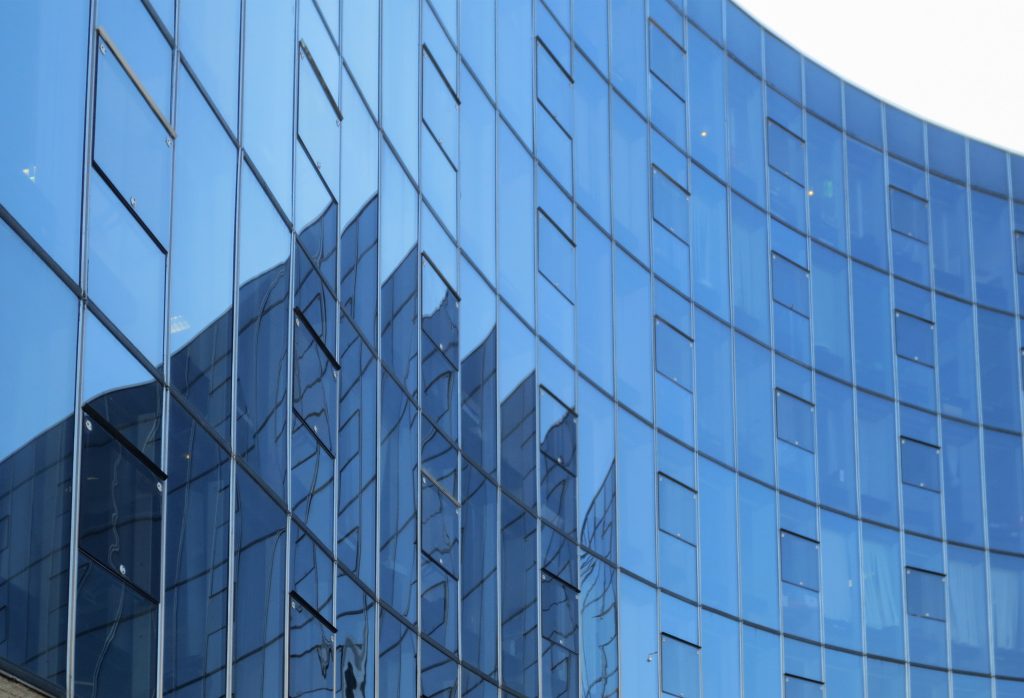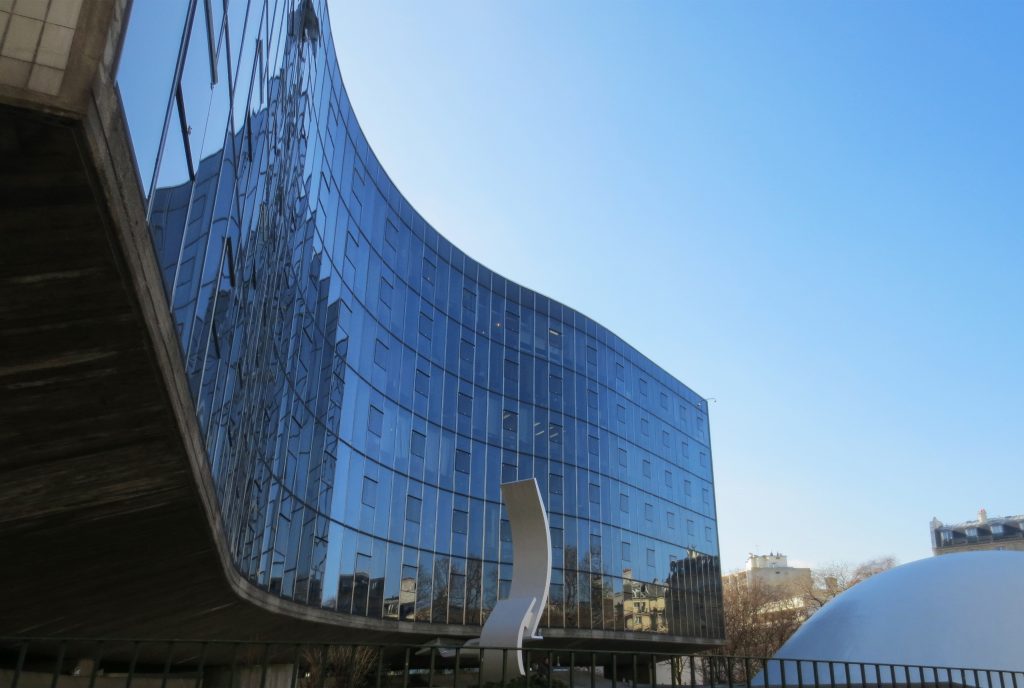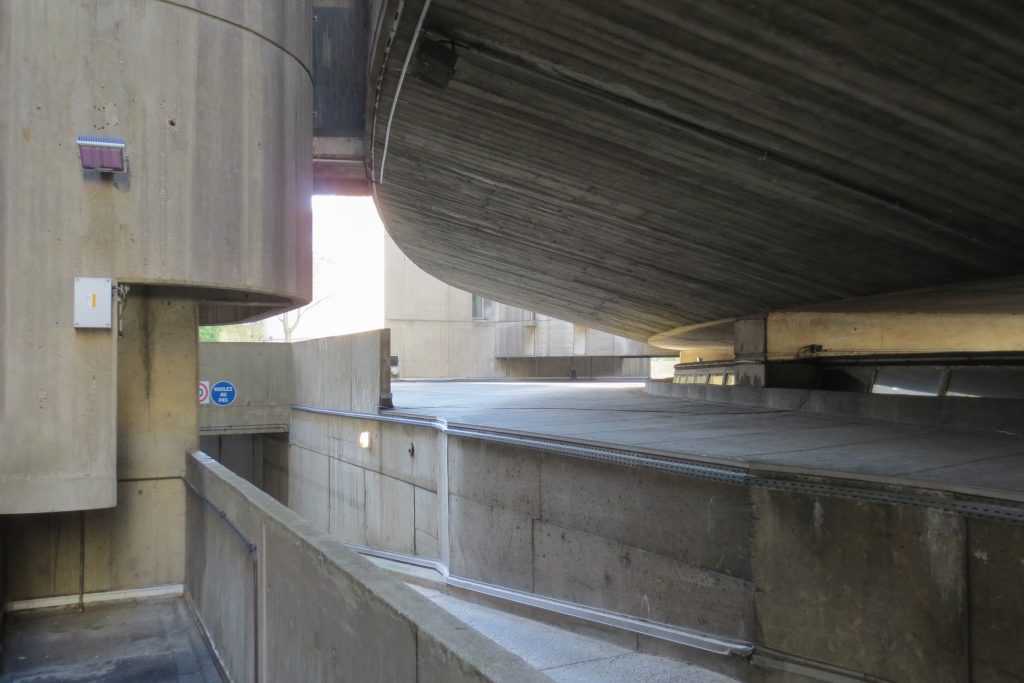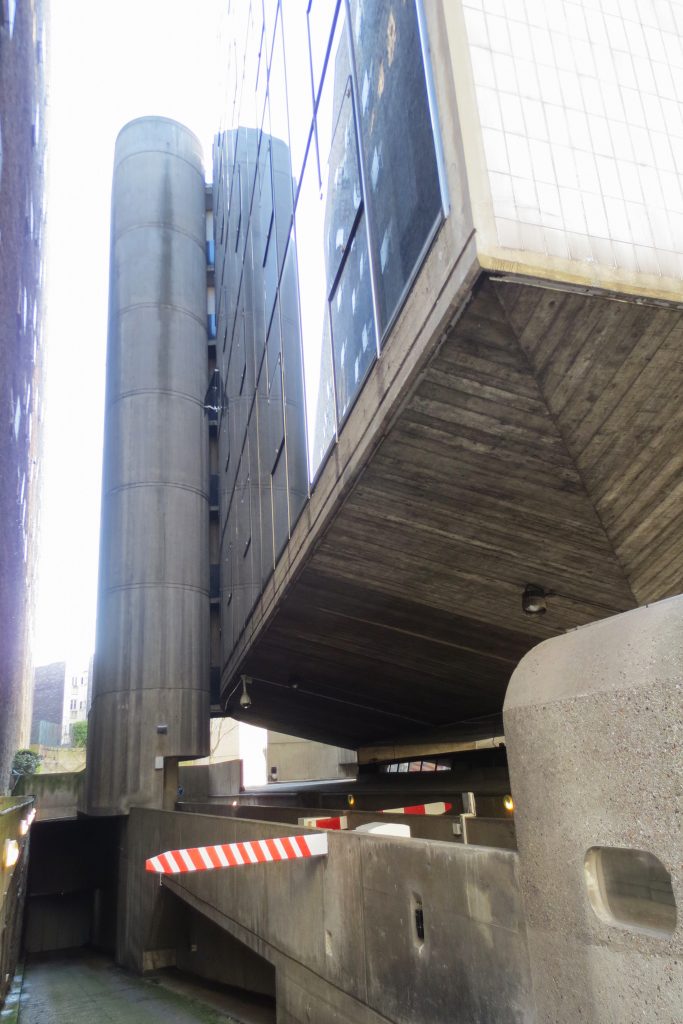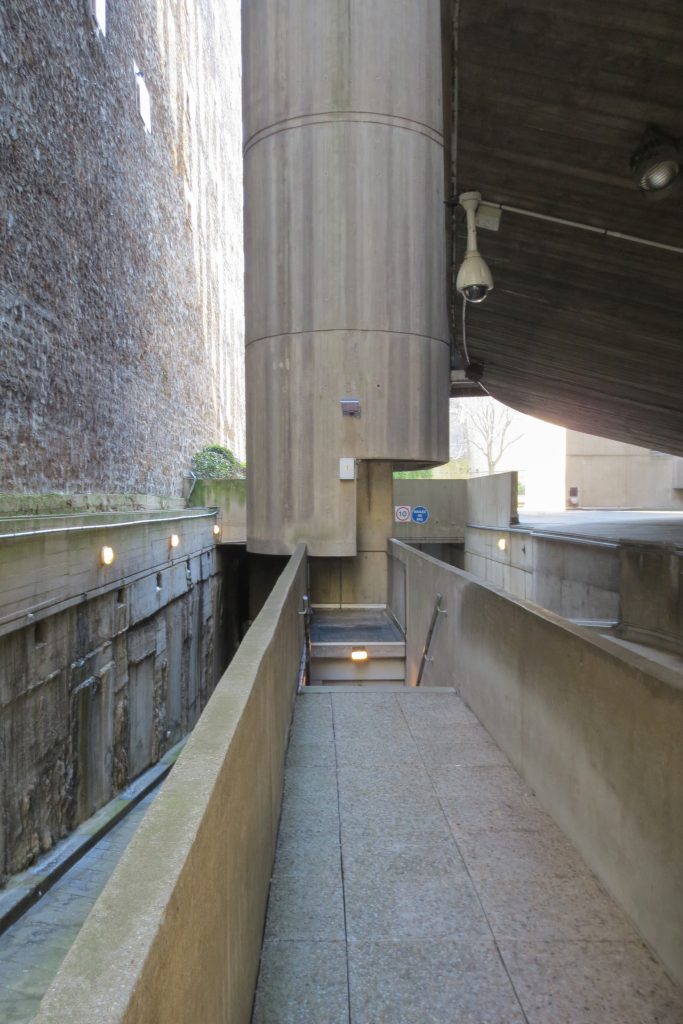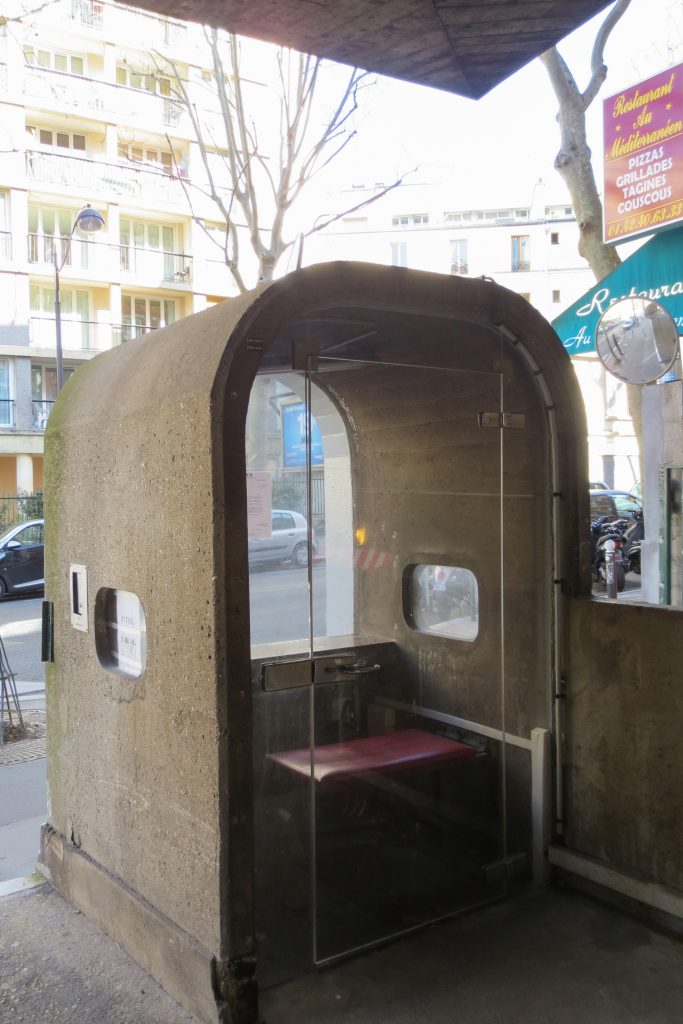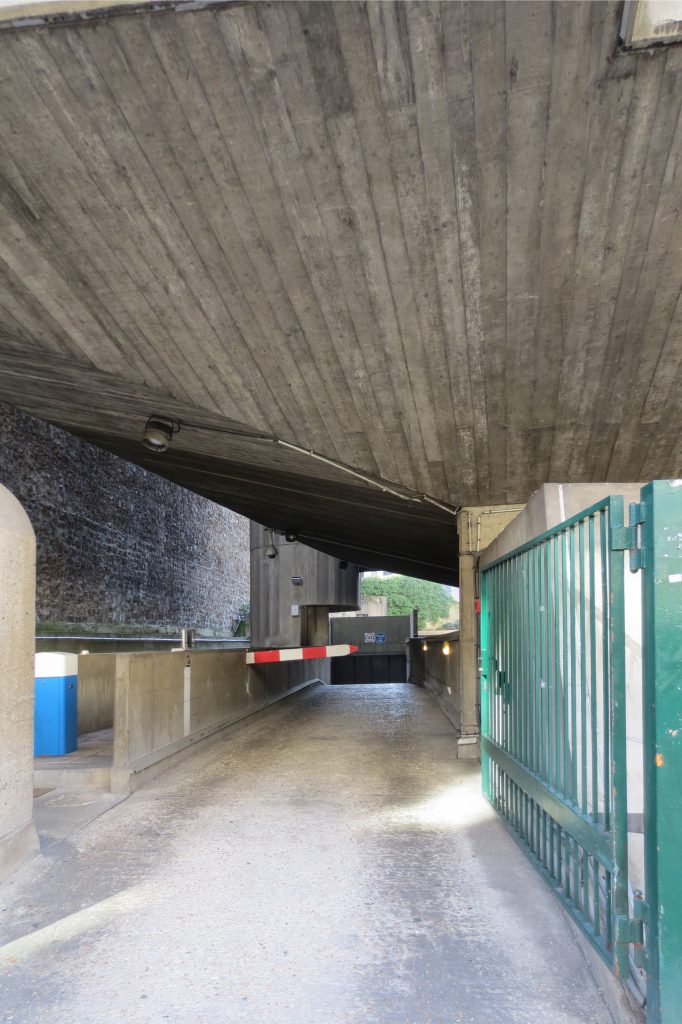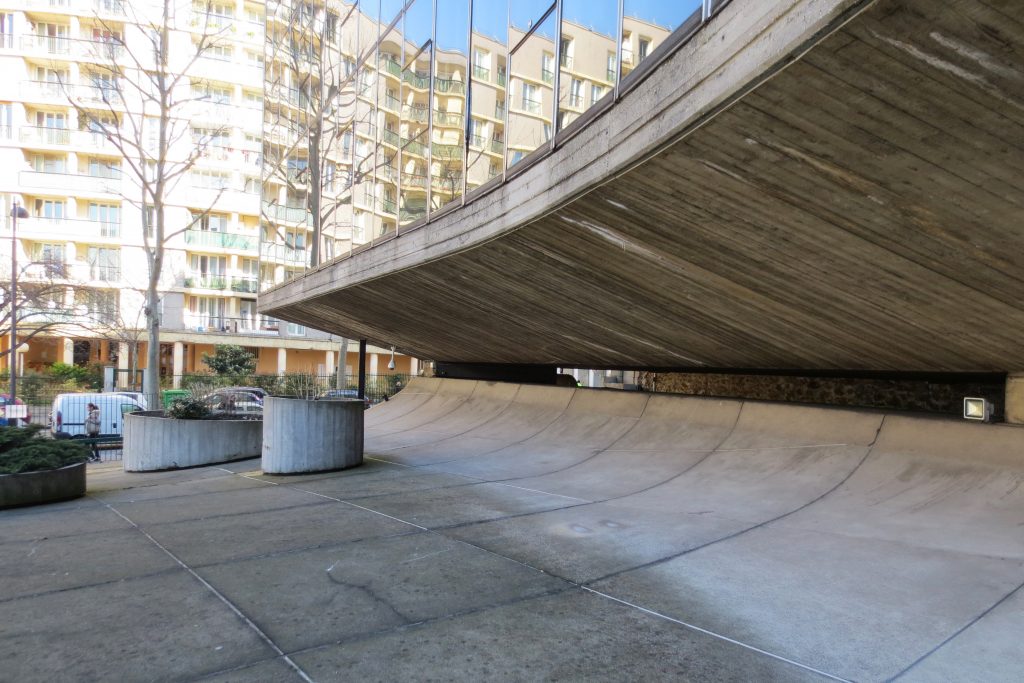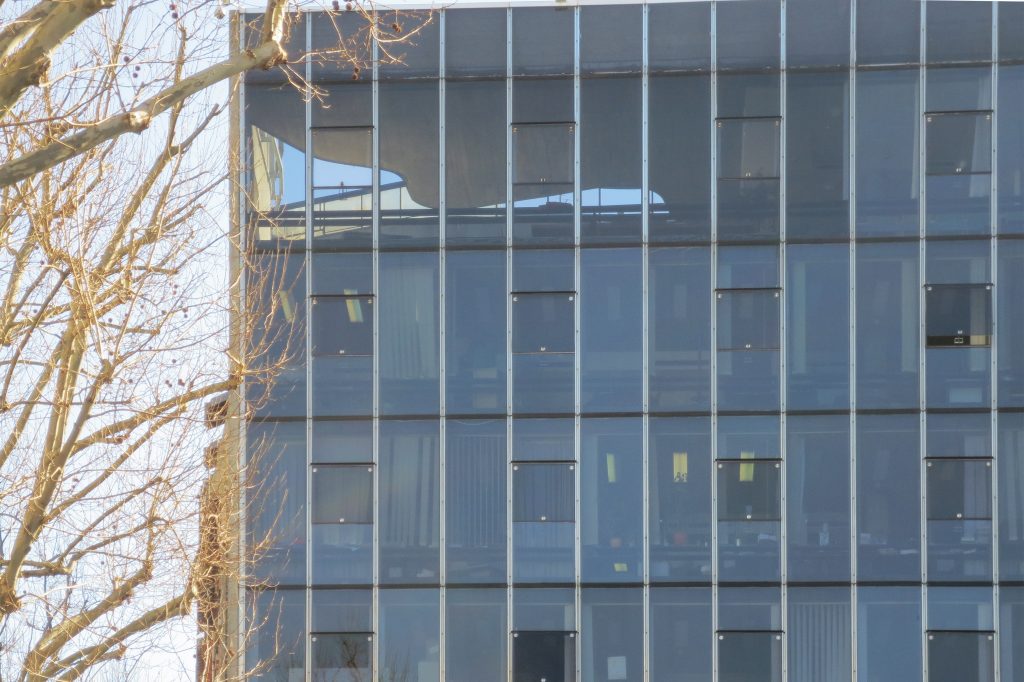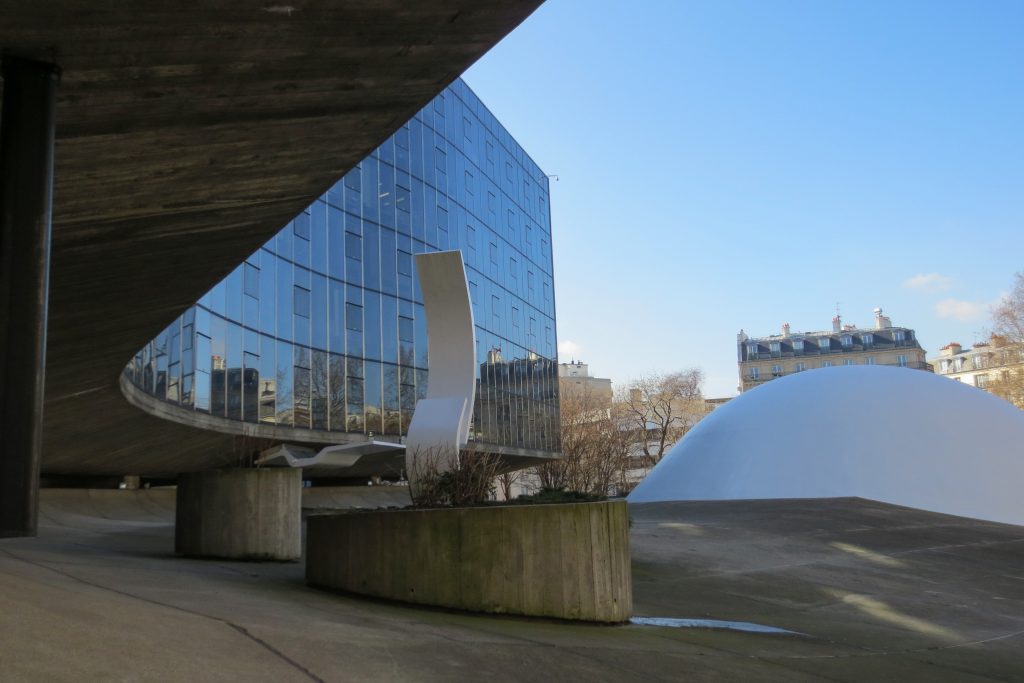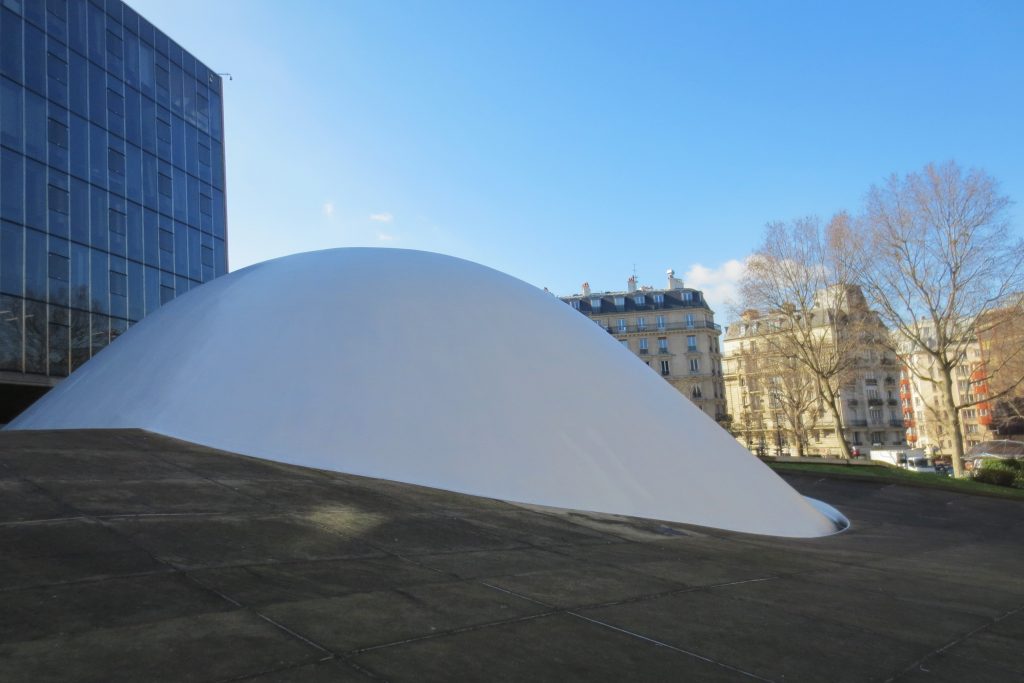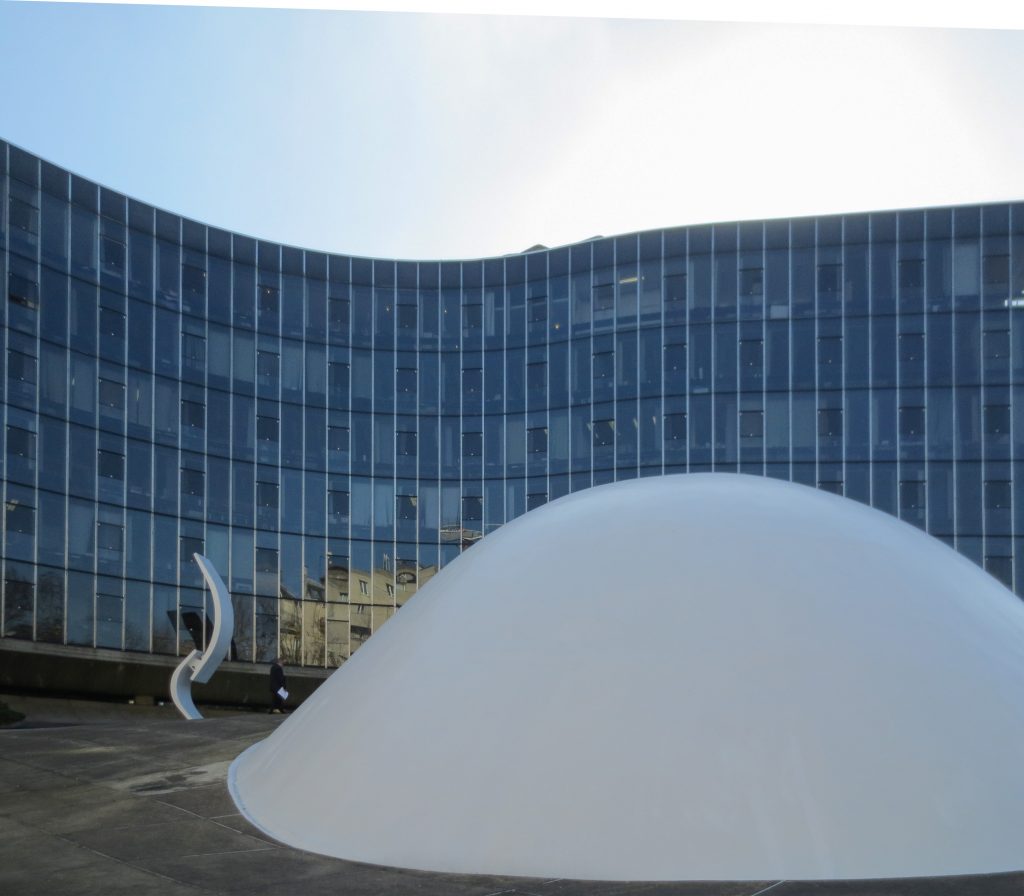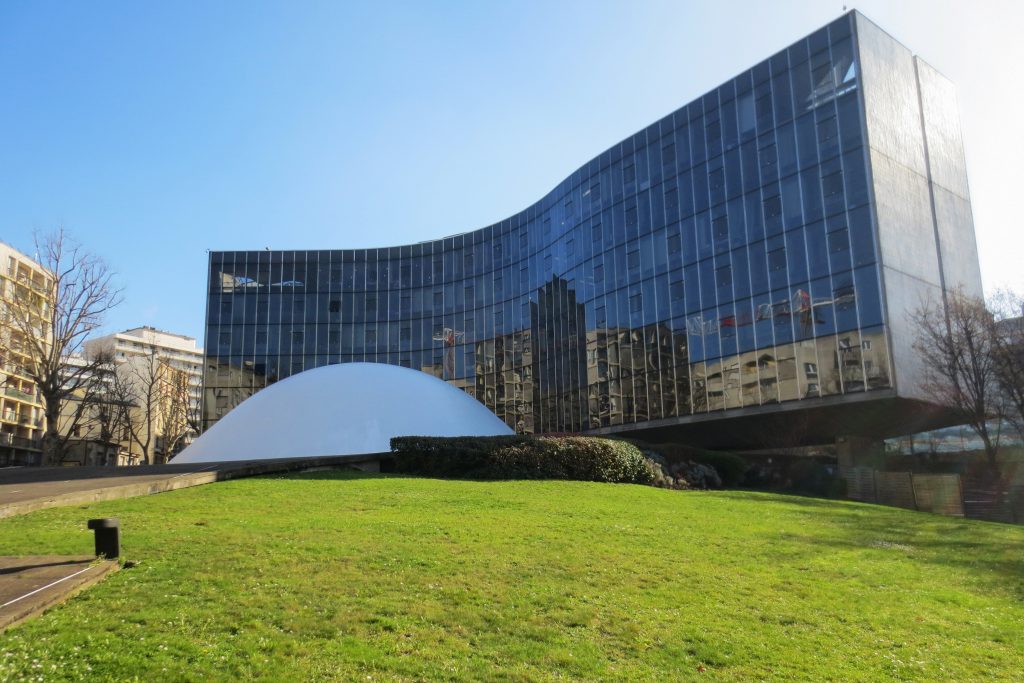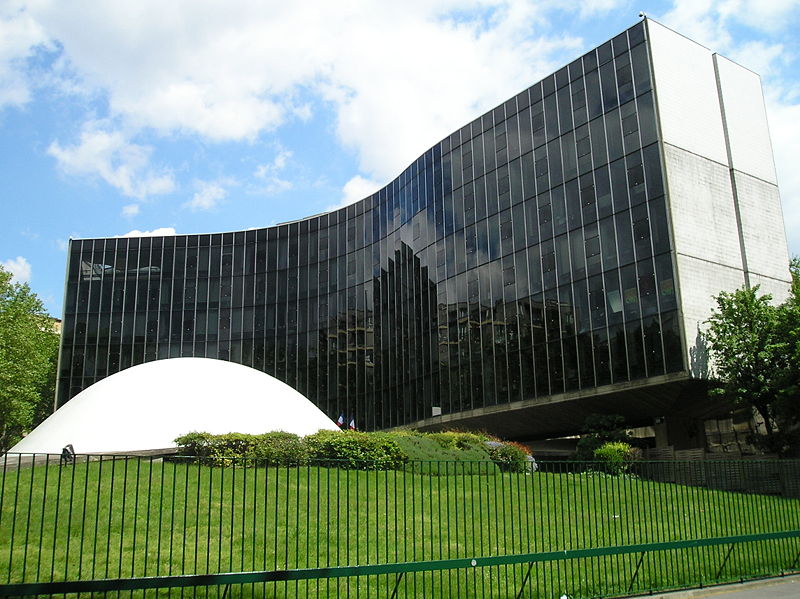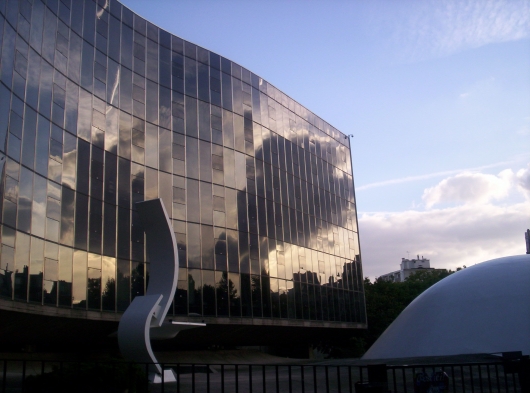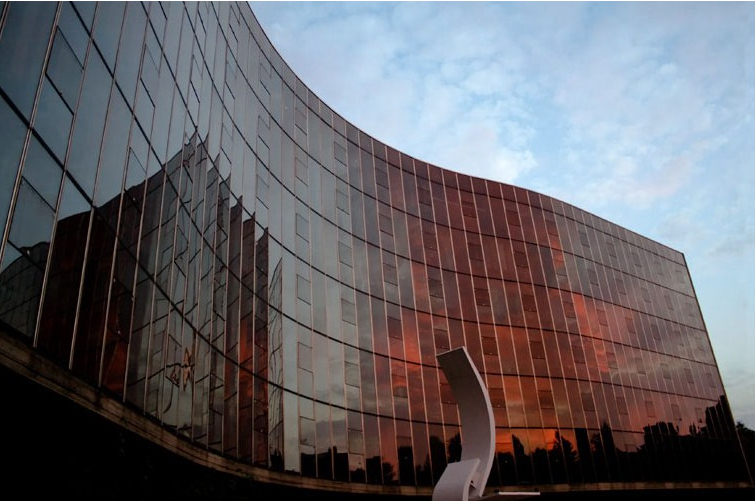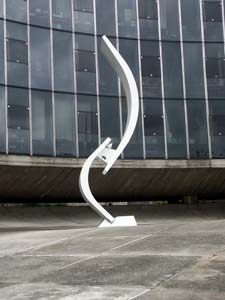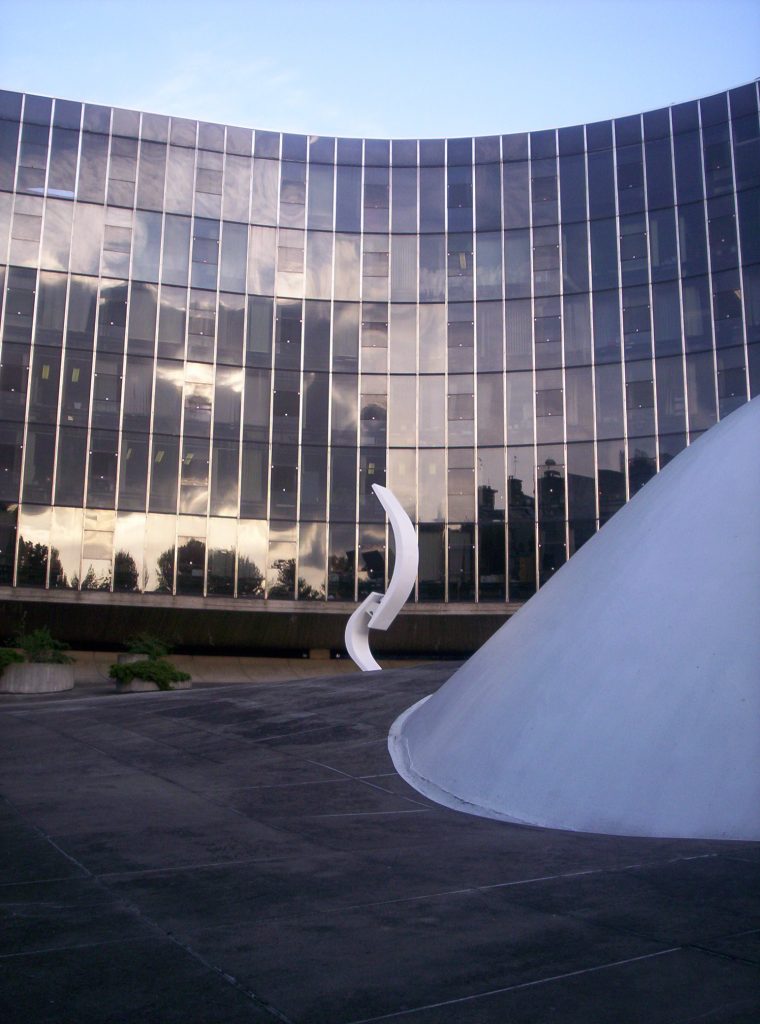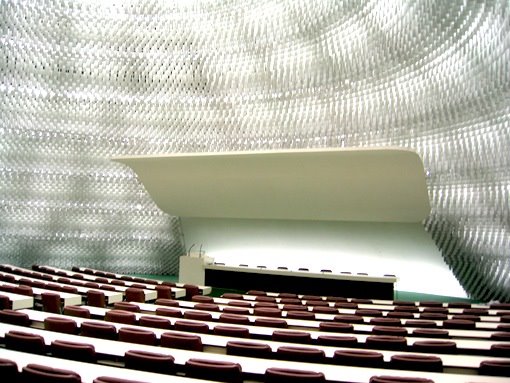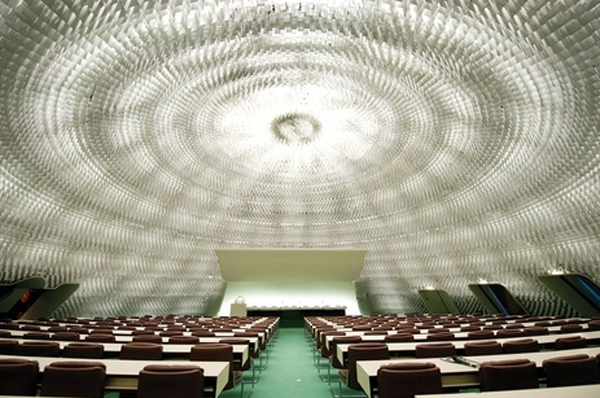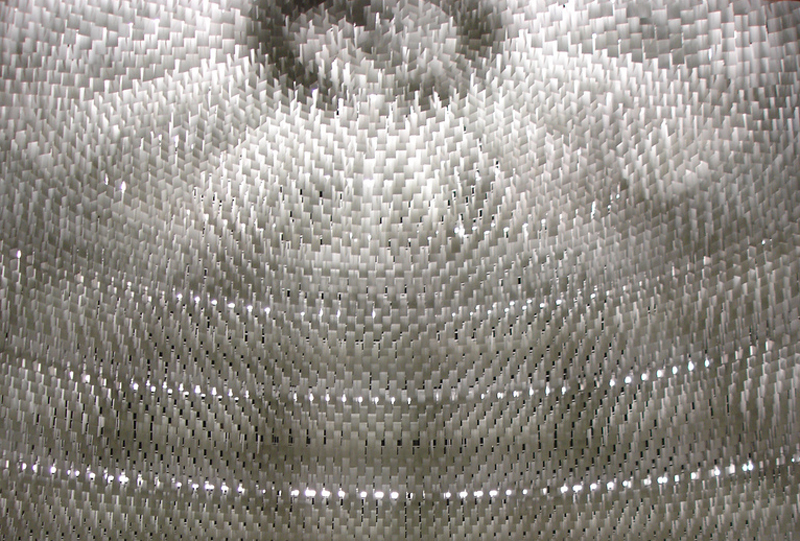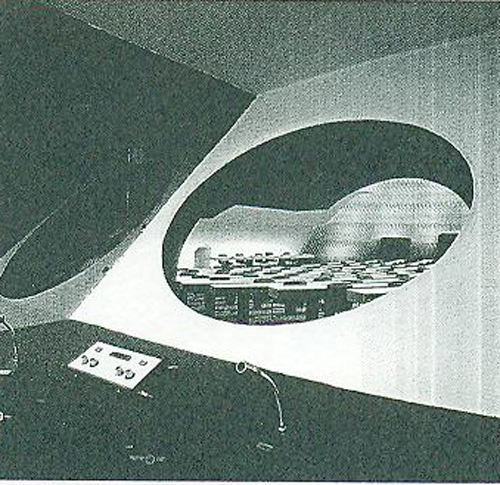French Communist Party Headquarters

Introduction
The impact of Brasilia supposed to Oscar Niemeyer the opportunity to work abroad. Although it was his time in the United States that gave him the international recognition, its path would also be marked by the European and Mediterranean welcome.
The headquarters of the Communist Party was one of the first orders that Niemeyer was in Europe. Following this project, was commissioned by the French Communist Party building to the Employment Office in Bobigny and the House of Culture of Le Havre.
Location
Located northeast of the French capital, at 2, Place du Colonel-Fabien, 75019 Paris
Concept
The intention of letting it “breathe” to the city and not break the site, materializes in the occupation of land under ground level, generating an open space district
Draft
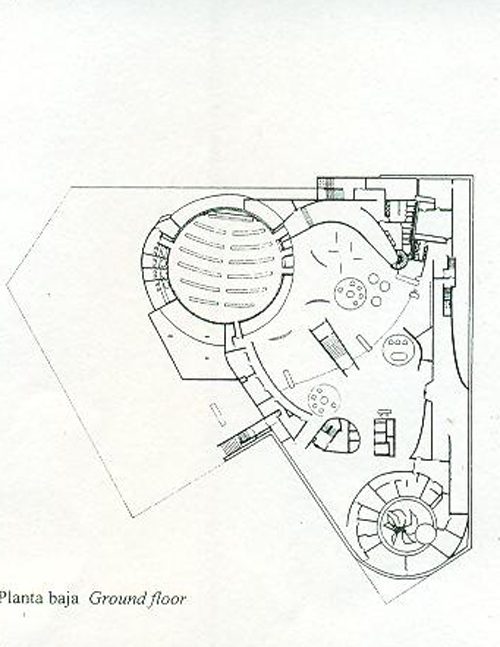
This was divided into three parts and its design contrasts sharply with a typical neighborhood of urbanization Haussmannian late apples.
- First part
This first part covers all the base on uneven ground, two floors below street level for garages and other services and the ground floor of the assembly, which is reduced to five feet on public roads. The ground floor is open-ended and spaces are visible only through the experience of its interior. The gently sloping roof together with the surrounding slope prints a new topography of the square.
- Second part
This points to the Chamber of Deputies, in the Three Powers Square of Brasilia, is the dome of the auditorium which meets the Central Committee and white structure stands on the square space
- Third part
This part comprises the six-story tower with its undulating forms is mirrored and the continuity of the urban fabric of the neighborhood and frames the plaza and its striking white dome, highlighting the combination of different volumes: “It was the whole, or rather, was the relationship between volumes and open spaces, so often forgotten, which I respected, “Niemeyer wrote.
Spaces
The design of this project Niemeyer took advantage of the terrain and find the right balance between areas and volumes.
- Plaza
This platform is used as a meeting place, “the great hall of the working class” with an auditorium, exhibition hall and library.
- Tower
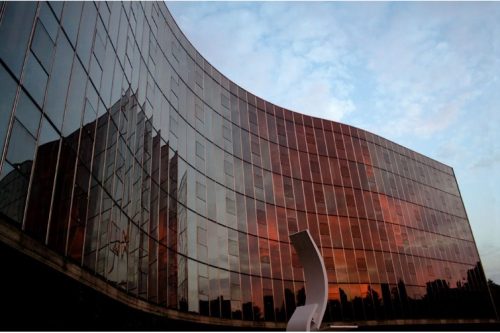
This rests on five pillars that are her only support and create a scenario that give the tower an appearance of lightness. Posteriorly has vertical circulation volumes annexes. In rolling floors are offices and the last is the restaurant. Its structure resembles the sinuous Copan building in Sao Paulo.
- Auditorium
The strategy of half-buried the ground floor reminds the Brasilia Cathedral, while the dome is one of the constants in the architecture of Niemeyer.
The reinforced concrete dome has a base tapered and spherical cap. Its radius and height are 11 meters.
Materials
This project was supported Niemeyer and collaboration of the French Jean Roche, Paul Chemetov and Jean Prouvé, the latter designed the walls and woodwork.
As in all projects of this architect is concrete, with its undulating forms and white. In this case combined with a large glass facade, where steel and aluminum make up their frames.



